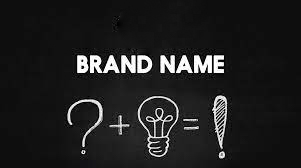Branding
The brand is in its golden age. Once an abstract concept used by marketing managers, it has become a board-level concern and a major consideration during business valuations.
But the way brands are developed has changed profoundly. In the ’50s, Walter Landor pioneered classic branding techniques designed to convey friendliness, reliability, and trustworthiness and these techniques lasted for decades. A brand’s logo was its lynchpin, and advertising, websites and business cards were designed around it. A brand had to be, above all, simple and unchanging; with deviation seen as a threat.
But times have changed. Modern markets are hypercompetitive and global and a brand’s customers, competitors, and business models are constantly in flux. This is exacerbated by low barriers to market entry which mean new brands can transform their industry in a matter of months. Zipcar, Uber and booking.com did just this in the car rental, taxi and hotel sectors.
Agile brands have a few key characteristics: they are adaptable and seek out opportunity, they are clear about their principles and able to collaborate with their market, they are multi-platform and active rather than reactive, and, finally, they are outward looking and aware of global influences.
The successful modern brand must break from the traditional model. Maintaining brand ahead of flexibility can make it irrelevant. Similarly, logo and abstract ideas are less important than delivery of brand promise. In short, brands must be rugged and resilient to cope with markets that can be wildly unpredictable.
One such brand is that of French charity, Djantoli, with whom Landor created a concept that has reinvented NGO identities. Djantoli operates throughout Africa where it monitors child weight to detect illnesses such as malaria and diarrhea before they claim lives. Djantoli regularly sends an agent to weigh registered children, then sends the data to a health centre where anomalies prompt a doctor to schedule a check-up.
The new brand updates as the organisation’s success increases; it shows the number of children’s lives saved by the project in real time. As the number grows, friends and partners are alerted, motivating them to contribute more and help save lives. Digital platforms are refreshed via a link between the doctor’s notes and a brand-management system; and business cards are updated by a stamp with the new number.
Djantoli’s success is demonstrated by the brand itself, disrupting perceptions of normally static logos and acting as a permanent and free communications campaign. The positivity of the brand is also a contrast to the often negative way NGOs convey their message.
Nine months after the new brand was implemented, the number of registered children increased by 62%, donations from individuals increased by 100% and, most importantly, the number of lives saved doubled. With zero media investment, Djantoli’s success relies on a single, yet powerful change: its identity. Not bad for a logo, is it?
A second agile brand, Less wine, changed the traditional rules of the premium wine market. Less wanted to solve the tricky equation of making good wine available at an affordable price, and in a way that was kind to the planet. With this aim, Less was already encouraging shoppers to fill bottles directly from wooden casks at its stores.
The brand identity was designed to reflect these goals. Bottles were branded minimally with a design existing in the negative space only. The simple design was sand-blasted onto bottles or cut out on recycled paper, and so created by removing material. A unique gift bottle was customized with a label marked by a drop of the wine it contained. Wine that would normally retail for £10 is now sold for £5.
This eco-friendly brand is changing the rules of the market and helping make fine wine accessible to all. In a third rebrand, Landor helped luxury hotel company, Kempinski, transform expectations of business travellers in the Chinese hotel market. With Kempinski, Landor invented the Tangram brand; a three-star hotel with the comfort and feel of a four-star. Prior to this, there had been only two-star or luxury five-star hotels in China and neither were particularly suited to the mid-level business traveller’s needs and budget.
The new hotel brand differentiated itself by providing a flexible stay where professionals could work, relax, and remain connected. Check-in was automated and saved on time and staff. The lounge was suitable for formal meetings or chats, while in-room modular ‘bed-desks’ morphed into an office in a snap.
Since its launch in 2012, occupancy rates at Beijing’s Tangram Hotel have risen steadily and it has seen greatly improved ratings on TripAdvisor and Ctrip. In 2014, a second Tangram hotel was opened in Kurdistan, and more hotels are planned for emerging markets in the near future.
Djantoli, Less and Tangram are brands that have changed the rules of the game; they took advantage of gaps in their markets and developed three unique and memorable stories and identities. Each one helps demonstrate that agility, the ability to transform, is key to today’s successful brand.
Article Provided by: Creative Blog
 If you would like to discuss Your Logo with Mojoe.net or your website’s analytics, custom logo designs, social media, website, web application, need custom programming, or IT consultant, please do not hesitate to call us at 864-859-9848 or you can email us at dwerne@mojoe.net.
If you would like to discuss Your Logo with Mojoe.net or your website’s analytics, custom logo designs, social media, website, web application, need custom programming, or IT consultant, please do not hesitate to call us at 864-859-9848 or you can email us at dwerne@mojoe.net.


Recent Comments